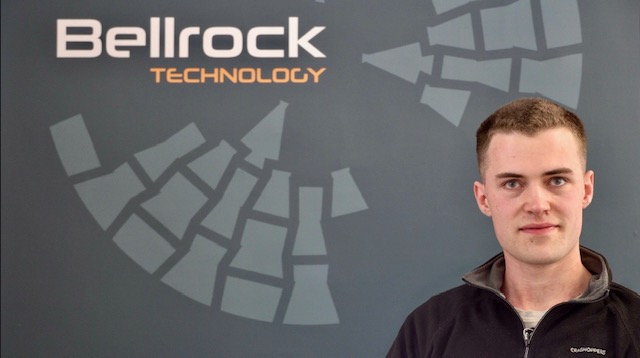Written by James Plender, Solutions Engineer

We are currently living through two crises – climate and cost of living, sparked by huge rises in energy costs.
As a result of the climate crisis, we know how vital it is to go ‘green’ through renewable energy, cutting our fossil fuel use, and helping ease the temperature rise that could result in catastrophic global warming.
But the cost-of-living crisis has dented our confidence in embracing the societal benefits that a more renewable, greener way of accessing our energy would bring. A significant contributor to this is the pricing of renewable energy in our current energy market. So four coursemates and I decided to write an academic thesis tackling this for our MEng degrees at the University of Strathclyde.
Before I go on, let me give you some background about myself. I’m currently studying an Integrated Masters in Electrical and Electronic Engineering. But I also work part-time as a Solutions Engineer at Bellrock Technology, and will be joining full-time when I graduate this summer.
Through my internship with the company, I realised how gaining real value from data could be translated to gaining better and more cost-effective use of renewable energy for consumers. The renewables market is complex, focusing primarily on wind and solar. In Scotland, we generate near 100% of our energy through renewables. But this does not translate into the market, where generation tends to follow demand, rather than demand following generation.
For our final year MEng group project, we decided to see if this trend could be altered, and so find a way to fully maximise the consumer usage of renewable energy that we generate. Firstly, we analysed how renewable energy is charged to consumers, and how consumers could access and use this energy better to power up their more eco-friendly household goods – specifically fridges and electric cars.
With renewable energy pricing, we focused on one energy company’s agile pricing structure, which changes every 30 minutes, going up and down like a silhouette of skyscrapers. It goes up in periods of common peak usage, but also lowers at night so much that it goes into negative pricing – that is, companies can lose money as its pricing has gone to say minus 20p per unit. But as they are paid 50p per unit in subsidies they are content to allow this to happen.

For us, the key question was: what if consumers were able to access a way that allows them to recharge their goods, but during the cheapest pricing periods? We partnered with myenergi, a company behind smart home energy solutions, to find a way of making that happen. myenergi provided us with a electric vehicle (EV) charger that could be controlled using code – allowing for an electric vehicle to be charged on command once plugged in.
We looked into whether, through the smart use of data, we could control the time cycle when it comes to chargers powering up vehicles. The answer is yes, and this is where Bellrock Technology came in. Its cloud software, Lumen® – what is known as ‘software as a service’ – is a perfect example of how automation can transform our lives, using data at speed and at scale to provide real-time analysis in seconds which it would take humans weeks if not months to achieve.
Bellrock Technology kindly sponsored us, allowing our group to write code that could ‘live’ on Lumen®, which the company made available to us throughout our project. Through this code, we instructed Lumen® to constantly monitor electricity pricing and programmed it to begin charging at the lowest possible cost to the consumer. Lumen® then controlled the EV charger over the internet so that charging began when the cost was at its lowest. As it charged, Lumen® would continue to monitor the renewable energy being generated through solar or wind, evaluate and update the variable tariff every 15 minutes in ‘real time’ to make sure the cost benefits for the consumer were maintained.

According to our findings, such a method could save consumers upwards of £500 a year, and provide the boost needed for more people to ditch the fossil fuels and go green. But just as important, it proves the value of an automated solution such as Lumen®, providing the perfect charging time 24 hours a day, seven days a week, 365 days a year.
This speed and scale at which it works – analysing multiple data streams every 15 minutes and reaching a conclusion in a matter of seconds – obviously cannot be replicated by a human. As a result, it can transform the consumption of renewable electricity by consumers, saving them money, and saving the planet. It would provide huge societal benefits, minimise fossil fuel generation, and maximise usage of renewable generation in Scotland.
This latter point is vital, as we currently pay millions in compensation to wind farms for generating too much electricity when it’s windy.
Through the scenario developed in depth through our thesis, demand will follow generation. This is a step change for renewables, and one that would mean we can definitely survive on renewable energy alone in the future.

